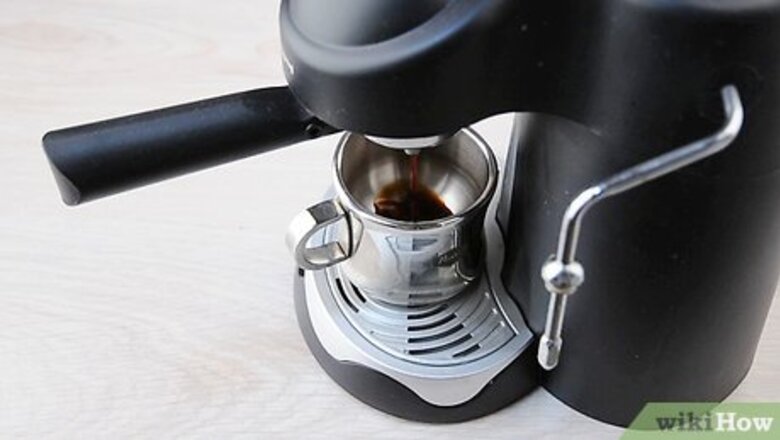
views
X
Research source
The most striking thing about this drink is the milk foam on top. A soothing, consistent layer of foam is what sets a great cappuccino apart from lesser drinks. There's a greater part art than science in making the perfect cappuccino. Although it takes time to perfect the timing and method of pouring, having a firm knowledge of the basics will get you on your way towards the ultimate cup.
Making the Foam with a Steam Pitcher
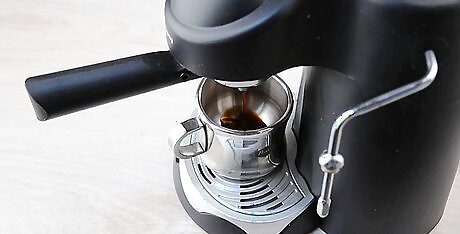
Pour brewed espresso into your cappuccino cup. Although specifics will depend on the type of cappuccino and the person making it, cappuccinos are roughly one quarter espresso and three quarters steamed milk. Pour your desired amount of brewed espresso into a large cappuccino cup before you steam the milk. That way, you'll have everything ready so you can pour out the steamed milk while it's still piping hot.
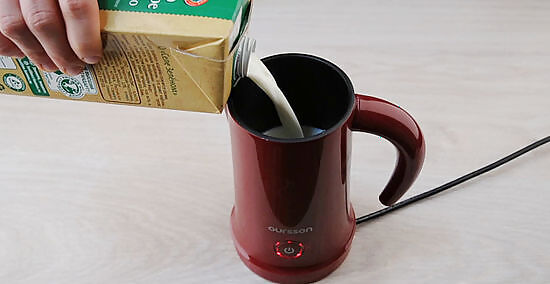
Fill a steam pitcher with cold milk. Steam pitchers are specifically designed to heat liquid through steaming. Most traditional cappuccinos are served as 6 ounce portions, although many North American outlets prefer a 12-ounce version. Use 3/4 cup to 1 1/2 cups of milk, depending on your preference. Non-fat milk is best if you're looking to get the most foam. However, non-fat milk will lack the creamy taste of its fatty alternative. It's up to you whether you favor foam or flavor. Alternatives to steaming with a steam pitcher include using a metal pitcher with a steam wand, using a frother or shaking up the milk in a jar. An authentic cappuccino will rely on steaming, however.
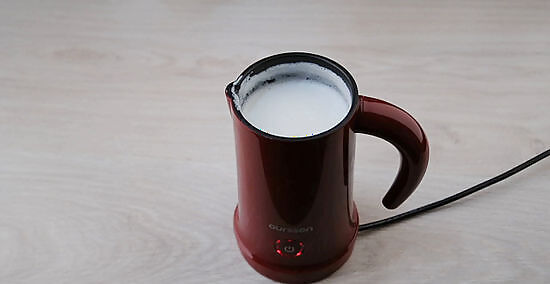
Steam the milk until it's hot. Steaming milk gives cappuccinos their heat and bubbly quality. You should aim to keep your steamed milk between 140 and 160 degrees Fahrenheit. For the sake of drinkability, it's important not to steam milk past 170 degrees. Depending on the steamer and the amount and temperature of the milk you're steaming, steaming can take between 10-40 seconds in most cases. It's a really good idea to have a thermometer at hand to put in the milk. That way you can make sure it's the exact temperature you want without having to resort to guesswork. If you don't have a thermometer, you can gauge the temperature increase by putting your hand up against the outside of the pitcher. Wait until the pitcher starts to get warm to the touch. When the outside of the pitcher gets uncomfortably hot, it should be an indicator that the milk has steamed long enough.
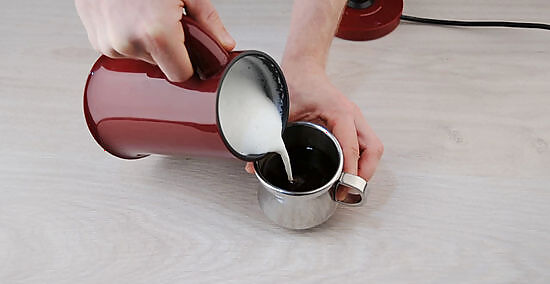
Use your steamed milk quickly. The longer steamed milk is left out, the less palatable it will be in a cappuccino. Milk is very sensitive to heat, and should only be steamed right before it's injected into the cappuccino mug. If you're making a larger batch of cappuccinos at once, hold off from steaming a large quantity of milk at once. Milk that is heated and reheated gets stale and loses its potential for foam.
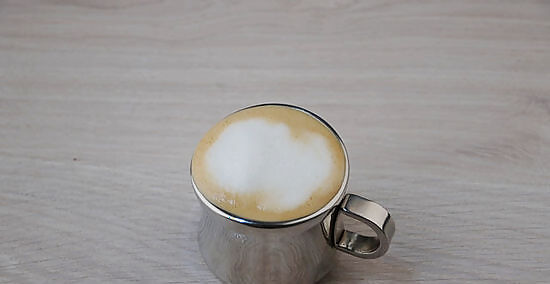
Pour the hot milk into the cappuccino cup. A cappuccino should be served in a coffee cup, and you'll ultimately need to combine the milk with the espresso. The trick here is to pour the milk in slowly. Any quick movements will risk compromising the foam. Level out your pitcher slowly as you pour. One way to save the most foam for your top is to take a spoon and use it to trap in the foam at the top of the pitcher. When the pitcher is almost empty, you can pour out the foam. Even out the foam with a spoon if it's poured out unevenly.
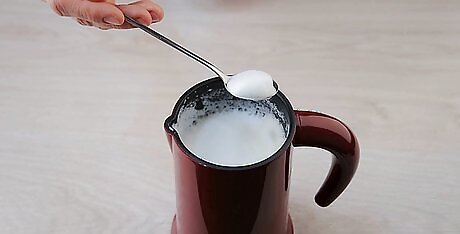
Tell the difference between a good and bad foam. Getting a perfect foam ultimately depends on your skill. With that in mind, it may take a few times before you get the kind of foam you want. However, you'll need to be able to distinguish a failure from a success to do so. A proper cappuccino foam should be even and soft. A bad foam will look very foamy and might risk frothing off the sides. There are two main reasons that could be the cause of a less-than-desired foam result. First, the steamed milk needs to be poured at the right depth. Secondly, the heat may of the steamed milk may have been too high to properly settle into soft bubbles. Don't be discouraged if you get a bad foam the first time you try it. Perfect coffee beverages require a lot more skill that people give it credit for. Each time you try, you'll get a bit closer to figuring out the subtle movements involved in it.
Using Other Methods to Make Foam
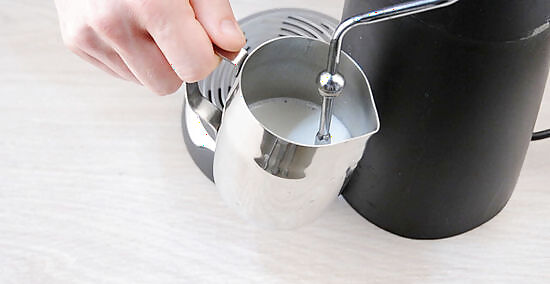
Use a steam wand with a chilled metal pitcher. A steam wand will heat up your milk in a way doesn't affect the taste of the milk. Dip your steam wand into the milk until its approximately a centimeter away from the bottom of your pitcher. As heat tends to rise, steaming it from the bottom up will ensure that your milk heats evenly.
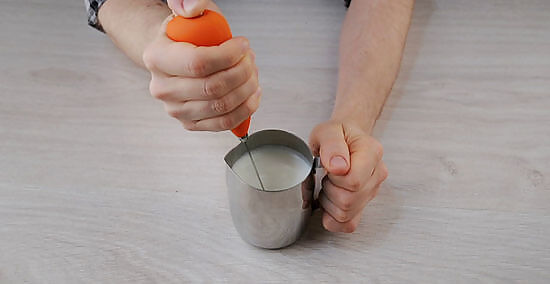
Try a milk frother. Unlike a steamer, where the bubbles are a welcome side effect, an electric frother is specifically designed to give milk bubbles. They're relatively inexpensive and can be purchased online if need be. Put your frother tip about a centimeter below the surface and hold it under for approximately 20 seconds while it froths. Move the frother slowly around the cup to make sure the bubbles are even. If you use a frother, you won't need to use a steamer to heat the milk. In that case, milk can be heated on stovetop or in the microwave.
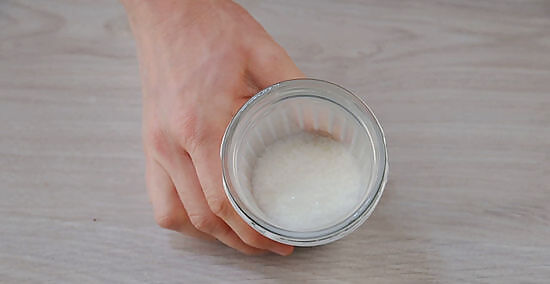
Shake up your milk for an easy froth. If you're making a cappuccino, it's assumed that you're wanting to go for quality over convenience. All the same, you can get a functional froth by shaking milk up before heating it. Put a cup of cold milk into a sealed jar or container. Shake it vigorously for up to a minute. Immediately after, throw it in the microwave and heat for 30 seconds. The heat is necessary for a proper cappuccino, but heating the milk will also stabilize the microbubbles you'll have formed from the shaking. This is a good quick fix, and recommended if you're not particular about your cappuccinos. Keep in mind, however that your foam won't look nearly as good as if you steam it.
Presenting Your Cappuccino
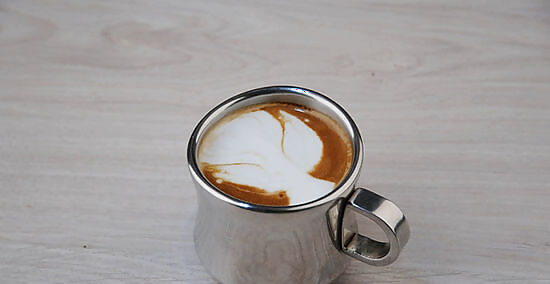
Draw art on your cappuccino. Drawing a design atop your cappuccino can be done through purposeful movement as you pour the milk into your espresso cup. It is very tricky to do and can take months for some baristas to get the proper hang of it. However, leaving a simple heart or swirl pattern on the top of your cappuccino foam can make it look all the more professional and classy when it's served. There are lots of possible designs for all different skill levels. For a heart shape, begin pouring in the centre and let shift the pour from side to side. If your steamed milk is really foamy, latte art will be virtually impossible.

Add cinnamon and chocolate flakes to your foam. Cappuccinos are valued for their presentation almost as much as their taste. Cinnamon and chocolate flakes will help to add to both. Once you have your foam settled, sprinkle these on as an afterthought. Even if you're making it from home, this technique can make your cappuccino look like a professional delicacy.
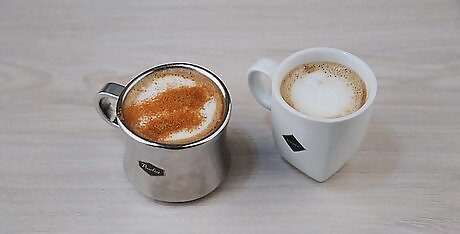
Use proper cappuccino cups. Cappuccino cups should be small, plain, elegant and handled. Depending on the size of your cappuccino, the cups you choose should hold up to 12 ounces. Cappuccinos take more effort to make than regular coffee, so you shouldn't use any old cup for it. Even if you think aesthetics don't matter, you may nonetheless find you enjoy the drink more if you put due respect into the way it's served. Make sure the cup size matches the amount of cappuccino you're serving. Cafe culture tends to value smaller sizes in order to emphasize taste over gorging. Even if you only have a certain amount of cappuccino to drink, putting it in a cup that's too big will rob it of some of its visual appeal.
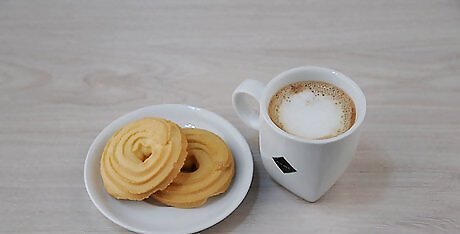
Serve with small cookies. Cookies, biscotti, brownies, muffins or other pastry snacks are a longtime friend of cappuccinos and other coffee drinks. Put a couple of cookies on a plate next to your cappuccino. In doing so, you'll elevate it from a drink to a multi-part cafe experience. Enjoy!




















Comments
0 comment